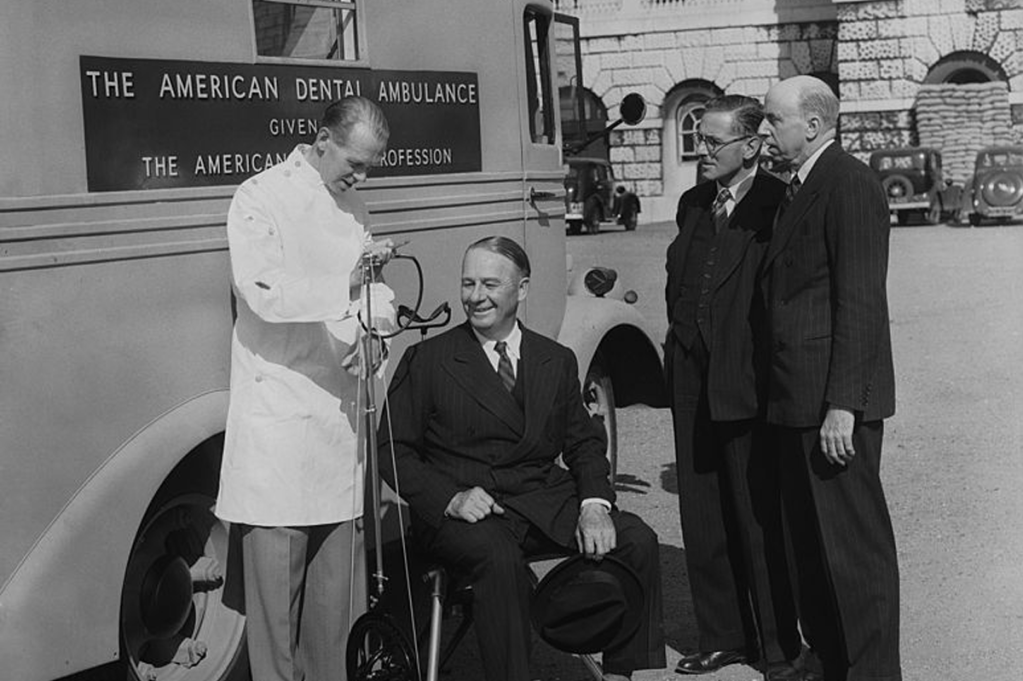Humankind’s ability to destroy itself has always outweighed its desire to fix the broken pieces. Conflict and war create great suffering, anguish and death, but they also lead to discoveries in technology, industrialization and, we learn from Lindsey Fitzharris’s The Facemaker, the invention of cosmetic and reconstructive surgery.
At the dawn of the Great War, it became painfully evident to those in the trenches that contemporary developments in warfare had far exceeded those in the world of medicine. These ghastly developments are illustrated in great detail in Fitzharris’s book, which tracks the military career and early life of Harold Gillies, the man who is largely credited as the father of modern plastic surgery as well as with having performed the first phalloplasty.
Fitzharris goes to great lengths to tell both Gillies’s story and that of the transforming techniques he learned to apply while serving in the midst of a brutal war. She also brings to life those he was surrounded by, such as his mentor Auguste Charles Valadier, who transformed his Rolls-Royce into a traveling dentist’s office. There were artists and facial sculptors, whether colleagues or patients. Each story of a soldier wounded on the battlefield is handled with painstaking historical detail, giving his name, his appearance prior to his devastating injury and the apparently impossible surgery that Gillies performed, as he rehabilitated and reconstructed faces lost to bullets and shrapnel that shattered jaws, noses and, in some cases, portions of skulls.
Fitzharris shows a genuine respect for those who served, and for the horrific and sometimes fatal ordeals they put themselves through in their attempts to return to some sort of physical normality. In the beginning of the twentieth century, plastic surgery was in its infancy, reserved for minor procedures for the wealthy and mostly limited to simple nose and ear-tuck procedures. While Fitzharris recognizes that some basic operations had existed as far back as the Civil War, she makes clear that Gillies learned many of his procedures “on the fly,” inventing practices and techniques such as skin and bone grafts that are still used today in modern procedures.
At the time, many practicing surgeons preferred artificial waxes and pastes in procedures to mend shattered jaws or missing noses. Not Gillies, whose mantra was “skin for skin, bone for bone.” In doing so, he created the revolutionary flap procedure, which consisted of taking exposed or extra skin from parts of the patient’s own body and positioning it over the wound or facial crevasse caused by shrapnel or bullets or chemical warfare damage. Gillies would go on to muse about the practice and creation of such painful and complicated facial procedures at the time without the assistance of “sulfa drugs, plasma or penicillin.”
Another aspect that Fitzharris explores is the ethical dilemmas that presented themselves to Gillies. His own stated purpose as a member of the British military was to mend, repair and send as many young men back to the front as possible, risking greater injury or death. He seemed personally opposed to this, being a philosopher-surgeon trying to save lives and mend faces, but acquiesced out of duty for the country. It’s a fascinating paradox that I wish could have been explored in greater detail.
And this brings us to the most gut-wrenching part of Fitzharris’s work — the photographs. The underexplored world of early twentieth-century medical procedures and their photographic documentation is fascinating, but the photographs included here are not for the faint of heart. There is a gruesome innocence to documenting the progressive work conducted by Gillies at his hospital solely dedicated to facial reconstruction: the first of its kind. What can be seen from the expressions behind missing jaws and faces is just how young some of these men were at the time, and Fitzharris notes that Gillies himself was taken aback by their resilience once in his care.
The possibility of a new face often gave the men a sense of optimism that Gillies would carry with him. The photographs are an indispensible part of the book itself, because although Fitzharris describes the nature of facial obliteration from war in detail, nothing does Gillies nor his patients greater justice than the faces themselves, which haunt the reader long afterward. And they, ironically, are the lucky ones. Santayana’s saying “Only the dead have seen the end of war” is a fitting epigraph for the book. The Facemaker, with its graphic, unforgettable imagery, isn’t for everyone. Nonetheless, Fitzharris’s engrossing biography elegantly weaves together history, innovation and the endurance of those whose battle scars were just the beginning of both their journeys, and it celebrates the medical mind who gave them all a second chance.
This article was originally published in The Spectator’s June 2022 World edition.

























